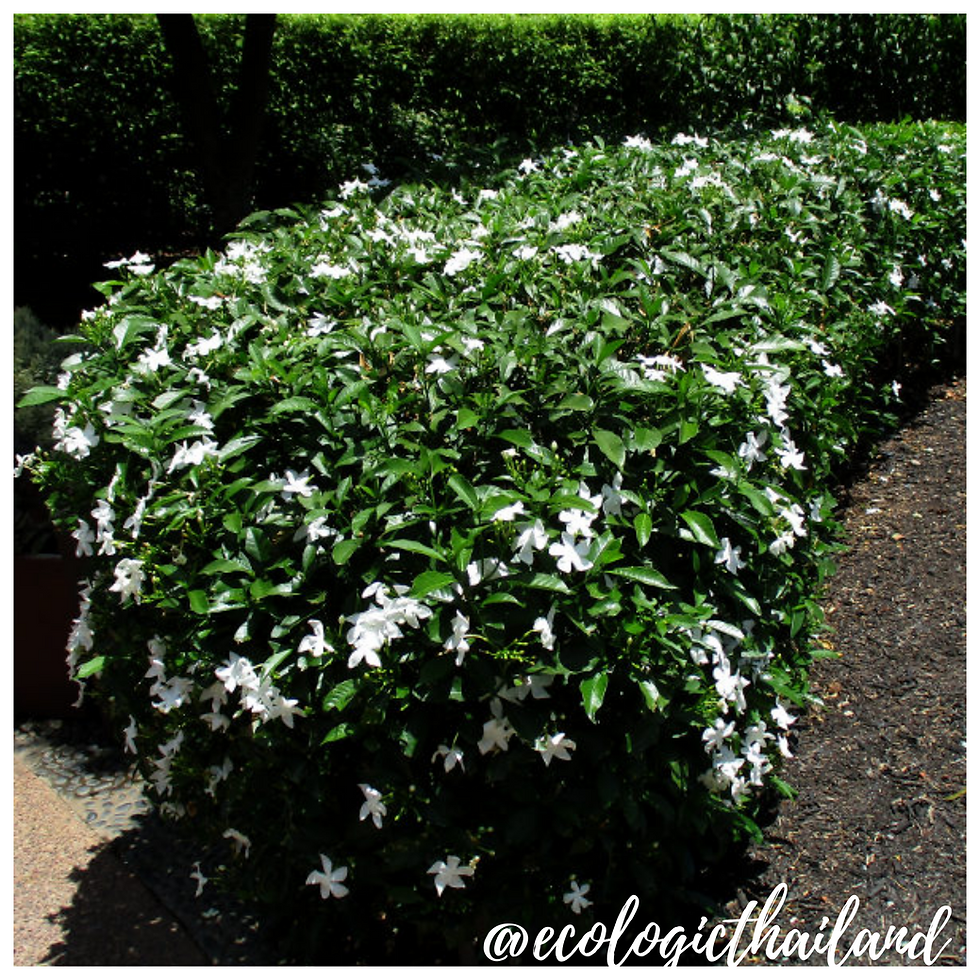Planter's Rhododendron | Malabar melastome
- Eco-Logic Resort
- Feb 20, 2021
- 3 min read
Kholngkhelng | โคลงเคลง | Melastoma Malabathricum
Family: Melastomataceae- Genus: Melastoma

The planter's rhododendron can be found everywhere in the Paksong area, growing in the wild along the roads and plantations.
Planter's rhododendron is a spreading, flowering evergreen shrub or small tree usually growing up to 2.5 meters tall, but with some specimens reaching a height of 5 meters. The plant is also know as Malabar melastome, Indian rhododendron, Singapore rhododendron, Straits Rhododendron,
Despite being mistakenly named so, it is not a Rhododendron, It is a common plant that springs up almost anywhere where land is cleared, or along open forest paths. The seeds of this plant are dispersed mainly by birds and mammals that feed on its rather sweet fruits, and the plant appears as commonly in the nature reserves as well as urban parks and gardens.
The plant is branched, and has reddish stems that are covered with bristly scales and minute hairs. Its leaves are simple, elliptic lanceolate with a rounded base, are up to 7 centimeter long, have three distinct main veins. It has beautiful pink or purple flowers Its fruit is a berry, which when ripe breaks irregularly to expose its soft, dark blue pulp and orange seeds
The plant is gathered from the wild for local use as a food and medicine.
The planter's rhododendron blooms during the dry season.

THE PLANT
Planter's Rhododendron grows wild on a wide range of soils, from sea-level up to an altitude of 3000 meters. It is an erect, free-flowering shrub that grows to a height of about 3 meters. The plant is branched, and has reddish stems that are covered with bristly scales and minute hairs.
Its leaves are simple, elliptic lanceolate with a rounded base, are up to 7 centimeter long, have three distinct main veins running.
Its flowers are found in shades from pink to purple. Its fruit is a berry, which when ripe breaks irregularly to expose its soft, dark blue pulp and orange seeds.
The fruit attracts many butterflies and birds.

THE LEAVES
The leaves of the Planter's Rhododendron are narrow and lanceolate, about 5-10 cm long, usually with 3 prominent veins running from the base.

THE FLOWERS
The flowers or the Planter's Rhododendron have a cup-shaped green calyx with five narrow reddish sepals and five purplish petals.

THE FRUIT
The fruits are berry-like and they break open irregularly, bearing numerous orange seeds, surrounded with purplish pulps.
The fruit attracts many butterfly and birds.
The fleshy pulp of the fully ripe fruit can be eaten fresh, they have a sweet flavor, but slightly astringent.
CULINARY USES
The young shoots are eaten as a fresh or cooked as vegetable.
The fleshy pulp of the fully ripe fruit is eaten fresh, they have a sweet flavor, but slightly astringent
TRADITIONAL MEDICINAL
NOTE: please take advice from a doctor if you are planning to use herbal medicine.
The plant is often used medicinally in Asia, where it is particularly valued for its astringent properties. The leaves, shoots, barks, seeds, and roots of the plant have been used to treat diarrhea, dysentery, hemorrhoids, cuts and wounds, toothache, and stomachache.
The ground up leaves are applied externally as a compress to cuts, wounds and swellings.
A strong decoction of the leaves is applied painful arthritic joints, and also to weeping sores caused by stinging insect hairs in order to aid extraction of the hairs.
It is also applied to other types of weeping wounds in order to disinfect them.
The roots are simply sucked or may be used for making a gargle in treating toothache.
The young shoots are eaten raw and said to be able to treat high blood pressure and diabetes while the roots are given to postpartum women to aid healing and womb strengthening.
INTO THE WILD: a down to earth experience

For guests and visitors to Paksong we organize weekly tours "The Edible Forest" and Foraging weekends: Into the Wild. We work with local guides to take you in the jungle of Paksong. After foraging, we will cook a meal with the ingredients, using bamboo together with you!
Come and join and learn about the abundance of food that nature gives us!
INTO THE WILD!


















Comments